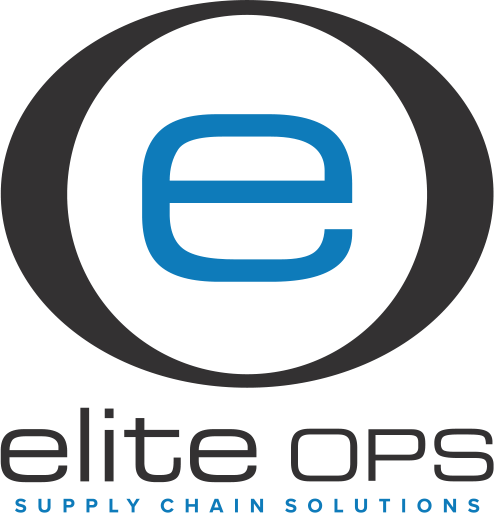Understanding the LIFO Method in Inventory Management.
Getting inventory management done correctly is vital for businesses to maintain profitability and ensure smooth operations. One commonly used method for inventory management is LIFO, which stands for Last-In, First-Out. This method, while less popular than FIFO (First-In, First-Out), can offer significant benefits in certain economic conditions. In this blog post, we will delve into the LIFO method, how it works, its benefits, and the scenarios in which it is most advantageous.
What is the LIFO Method?
LIFO is an inventory valuation method where the most recently acquired inventory is sold or used first. This approach assumes that the latest items added to the inventory are the first to be removed. The LIFO method is particularly useful in environments where inventory costs are rising, as it helps businesses manage the impact of inflation on their cost of goods sold (COGS) and taxable income.
Related: Techniques for Better Inventory Management.
How LIFO Works
To illustrate how LIFO works, let’s consider an example. Suppose a company buys batches of widgets at different times and prices:
Initial Inventory:
- Batch 1: 100 units at $10 each
- Batch 2: 100 units at $12 each
- Batch 3: 100 units at $14 each
Sales:
- When the company sells 150 units, the most recently acquired inventory (Batch 3) is sold first.
- 100 units from Batch 3 at $14 each = $1,400
- 50 units from Batch 2 at $12 each = $600
- Total cost of goods sold (COGS) = $2,000
Remaining Inventory:
- 50 units from Batch 2 at $12 each = $600
- 100 units from Batch 1 at $10 each = $1,000
- Total remaining inventory value = $1,600
Using the LIFO system, the most recently acquired inventory is sold first, which typically results in higher cost of goods sold and a lower remaining inventory value, especially in times of rising prices.
Related: How Can a 3PL Cut Operational Costs for eCommerce Businesses?
Benefits of the LIFO Method
1. Tax Advantages
One of the primary benefits of using LIFO is its potential tax advantages. In times of rising prices, LIFO increases the cost of goods sold by accounting for the higher cost of recent inventory purchases first. This results in a lower taxable income, which can significantly reduce the amount of taxes a business owes.
2. Improved Cash Flow
By reducing taxable income, LIFO can improve a company’s cash flow. Lower tax payments mean that businesses retain more of their earnings, which can be used for reinvestment, debt reduction, or other operational needs.
3. Better Matching of Current Costs with Revenues
LIFO provides a better match between current revenues and the latest costs. By aligning the cost of goods sold with the most recent inventory costs, businesses can better understand their profit margins under current market conditions. This can be particularly useful for financial planning and analysis.
4. Hedge Against Inflation
In an inflationary environment, LIFO acts as a hedge by using higher-cost inventory to calculate COGS. This reduces the impact of inflation on reported profits, providing a more accurate financial picture of the company’s performance during periods of rising prices.
Related: Everything You Need to Know About Sourcing and Procurement.
Implementing the LIFO Method
Inventory Management Systems
Implementing LIFO requires robust inventory management systems (IMS) that can accurately track the costs and quantities of inventory as they are purchased and sold. Modern IMS can automate the LIFO process, ensuring compliance and reducing the risk of manual errors.
Regular Audits
To maintain accuracy and ensure compliance with accounting standards, businesses should conduct regular inventory audits. These audits verify that the inventory records match the physical inventory and that the LIFO method is correctly applied.
Financial Reporting
LIFO has implications for financial reporting, especially in jurisdictions where LIFO is permitted under accounting standards. Businesses need to understand the regulatory environment and ensure their financial statements accurately reflect the use of the LIFO method.
Scenarios Where LIFO is Most Advantageous
Rising Cost Environments
LIFO is most beneficial in environments where the cost of inventory is rising. By using the most recent, higher-cost inventory for COGS calculations, businesses can reduce their taxable income and improve cash flow.
Industries with Stable or Increasing Prices
Industries that consistently experience stable or increasing prices, such as manufacturing, retail, and wholesale distribution, can benefit from LIFO. These businesses often deal with large volumes of inventory and can leverage LIFO to manage their costs effectively.
Long-Term Asset Management
Companies with significant investments in long-term assets can use LIFO to align their cost structures with market conditions. This approach can help in financial planning and maintaining a realistic view of profitability over time.
Related: Warehousing and Inventory Management.
Bottom Line
The LIFO method is a valuable inventory management tool for businesses operating in environments with rising costs. By prioritizing the use of the most recently acquired inventory, LIFO provides tax advantages, improves cash flow, and offers a better match between current costs and revenues. While it requires robust inventory management systems and regular audits, the benefits of LIFO can significantly enhance a company’s financial performance and operational efficiency.
For businesses looking to optimize their inventory management, understanding and implementing the LIFO method can be a strategic move. By leveraging the advantages of LIFO, companies can navigate inflationary pressures, maintain accurate financial reporting, and ensure sustainable growth and profitability.
An external fulfillment service partner like Elite OPS is responsible for picking, packing, and shipping orders. Consider such a strategy to reduce shipping and operational costs.
Elite OPS has been a leader in Shipping and Logistics for over 25 years. Contact Us to find out how we can help you Save Time and Money on Procurement as a Service, eCommerce Order Fulfillment, and Kitting and Assembly.
Call 855-553-5490 or Click Here to Request a Quote!








